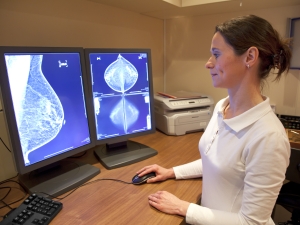Modeling Study on Radiation-Induced Breast Cancer Incidence and Mortality from Digital Mammography Informed U.S. Screening Guidelines

This study of women aged 40 to 74 expanded our understanding of breast cancer incidence and mortality due to radiation from mammography by looking not just at screening mammograms but also at subsequent diagnostic mammography and mammography-guided biopsy. The researchers used a novel simulation model that estimated how much radiation exposure should be attributed to each type of mammography exposure. It found that women who have more frequent mammograms, especially those with larger breasts, have a higher risk of radiation-induced breast cancer. The study's unique perspective contributed evidence for the U.S. Preventive Services Task Force’s 2016 breast cancer screening guideline update.
Read the article in the Annals of Internal Medicine.
- Read coverage in Cancer Therapy Advisor
- Read the Penn Medicine press release